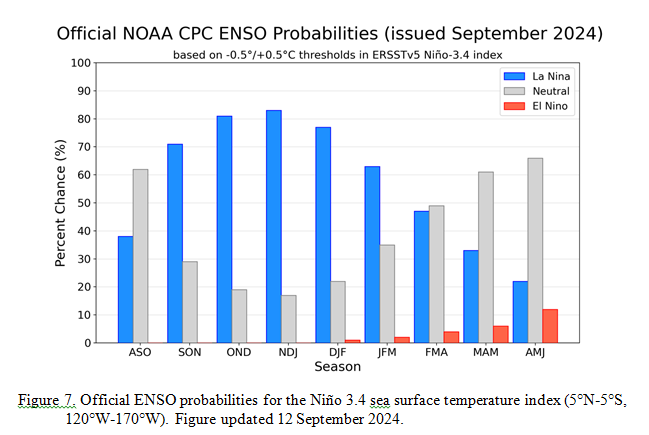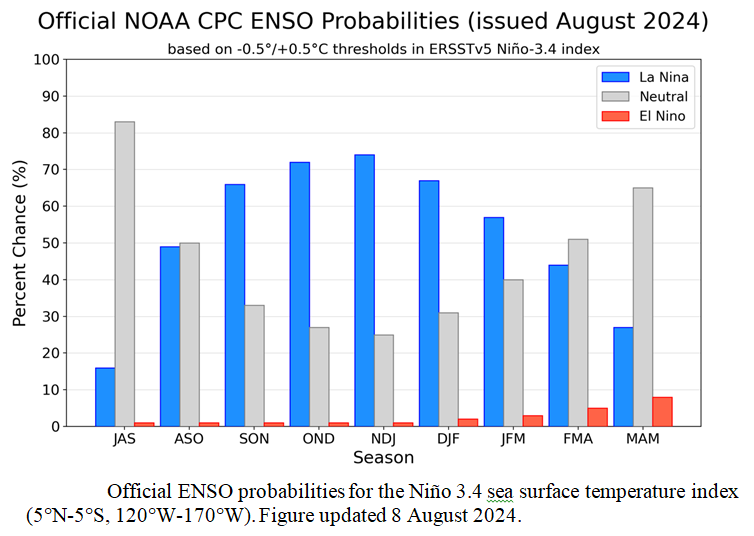Weather Outlook for the U.S. for Today Through at Least 22 Days and a Six-Day Forecast for the World: posted September 19, 2024
This article focuses on what we are paying attention to in the next 48 to 72 hours. The article also includes weather maps for longer-term U.S. outlooks (up to four weeks) and a six-day World weather outlook which can be very useful for travelers.
First the NWS Short Range Forecast. The afternoon NWS text update can be found here after about 4 p.m. New York time but it is unlikely to have changed very much from the morning update. The images in this article automatically update.
Short Range Forecast Discussion
NWS Weather Prediction Center College Park MD
Thu Sep 19 2024
Valid 12Z Thu Sep 19 2024 – 12Z Sat Sep 21 2024…Severe thunderstorms possible in the eastern Plains and Upper Midwest
today……Late-summer heat forecast from the southern/central Plains to the Upper
Midwest…The main weather story for the next couple of days will be a strong
occluded low and frontal system bringing impactful weather to the Plains
and Midwest. The central low will gradually lift north into southern
Canada today while it pushes a strong cold front across the eastern Plains
and Upper Midwest. Precipitation will taper off in Montana and the
northern Plains by this afternoon as the low moves farther away, and the
focus for precipitation will shift to areas ahead of the cold front. A
line of showers and thunderstorms is forecast to develop ahead of the cold
front today, and a wave of upper level energy moving over the Upper
Midwest will provide support for scattered severe thunderstorm development
this afternoon into tonight. The Storm Prediction Center has highlighted
portions of the Upper Midwest and eastern portions of the central and
southern Plains with a Slight Risk of Severe Thunderstorms (level 2/4).
Potential storm hazards will include a couple of tornadoes, large hail,
and damaging wind gusts. Additionally, locally heavy rain in stronger
storms may result in isolated instances of flash flooding in the Upper
Midwest.Showers and storms ahead of the cold front will push east into the Great
Lakes region on Friday, but the front will weaken as it becomes separated
from its parent low in Canada. Shower and storm chances will also linger
along the eastern seaboard as a low pressure system strengthens offshore
in the western Atlantic. The main low will remain parked southeast of Cape
Cod over the next few days while a slow-moving cold front extends
southwest to the Florida Peninsula. Strong gusty winds will be possible
over the coastal waters in the vicinity of the central low, which has
prompted the issuance of Small Craft and Coastal Flood Advisories along
portions of the Mid-Atlantic and Northeast Coasts and Gale Warnings for
the offshore waters south of Cape Cod and Long Island. This system will
finally pull away from the East Coast by Sunday, which will result in
decreasing winds and precipitation chances.Calmer weather is expected for the West today, with some lingering showers
and storms under an upper low in the Great Basin and California, then the
next round of unsettled weather will arrive with a southward moving
frontal system Friday and Saturday. Precipitation will spread from the
Northwest and northern Rockies south to the Four Corners Region by
Saturday, and some wintry precipitation will be possible in the higher
elevations of the Intermountain West. Precipitation chances will also
expand again across the Plains and portions of the Midwest late Friday
into Saturday as the frontal system pushes east of the Rockies.Temperature-wise, late-summer heat will stick around in the Central U.S.
through the end of this week. Warm southerly flow will keep high
temperatures in the 80s and 90s from the southern/central Plains to the
Upper Midwest. Some areas in the southern Plains could see near record
highs today and Friday as highs approach 100 degrees. Above average
temperatures are also forecast for the Great Lakes and interior Northeast
underneath an upper level ridge. Temperatures in the West will remain
below normal over the next few days in the wake of the Plains system and
the upcoming late week frontal system. Temperatures in the East and
Southeast will be near normal with highs generally in the 70s and 80s.






